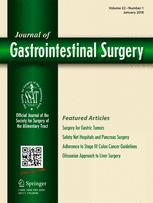Hoppo T, McMahon BP, Witteman BP, Kraemer SJ, O'Rourke RW, Gravesen F, Bouvy ND, Jobe BA
J Gastrointest Surg. 2011 Jul;15(7):1112-20.
BACKGROUND:
The functional lumen imaging probe (FLIP) uses impedance planimetry to measure the geometry of a distensible organ. The purpose of this study was to evaluate FLIP as a method to determine structural changes at the gastroesophageal junction (GEJ) following transoral incisionless fundoplication (TIF) and compare these findings with the accepted methods of esophageal testing.
METHODS:
Two different approaches (TIF1.0 and 2.0) using the EsophyX™ device were performed in six and five animals, respectively. Three dogs underwent a sham procedure. FLIP measurements were performed pre- and post-procedure and at 2-week follow-up. Upper endoscopy, manometry, and 48-h pH testing were also performed at each time point. FLIP was performed in ten patients before and 3 months after TIF.
RESULTS:
Following TIF procedures, there was a significant decrease in cross-sectional area (CSA) of GEJ compared to baseline; however, the CSA of both groups returned to baseline at 2-week follow-up. The FLIP results were supported with pH testing and correlated highly with both measures of GEJ structural integrity (LES and cardia circumference). Following TIF in humans, there was a decrease in GEJ distensibility compared to baseline that persisted to the 3-month evaluation.
CONCLUSION:
FLIP is able to measure and display changes in tissue distensibility at the GEJ, and results correlate with established methods of testing. FLIP may represent a single testing modality by which to diagnose GERD and evaluate the outcome after antireflux surgery.
Link to abstract on PubMed: Hoppo T, et al; J Gastrointest Surg. 2011 Jul;15(7):1112-20.


